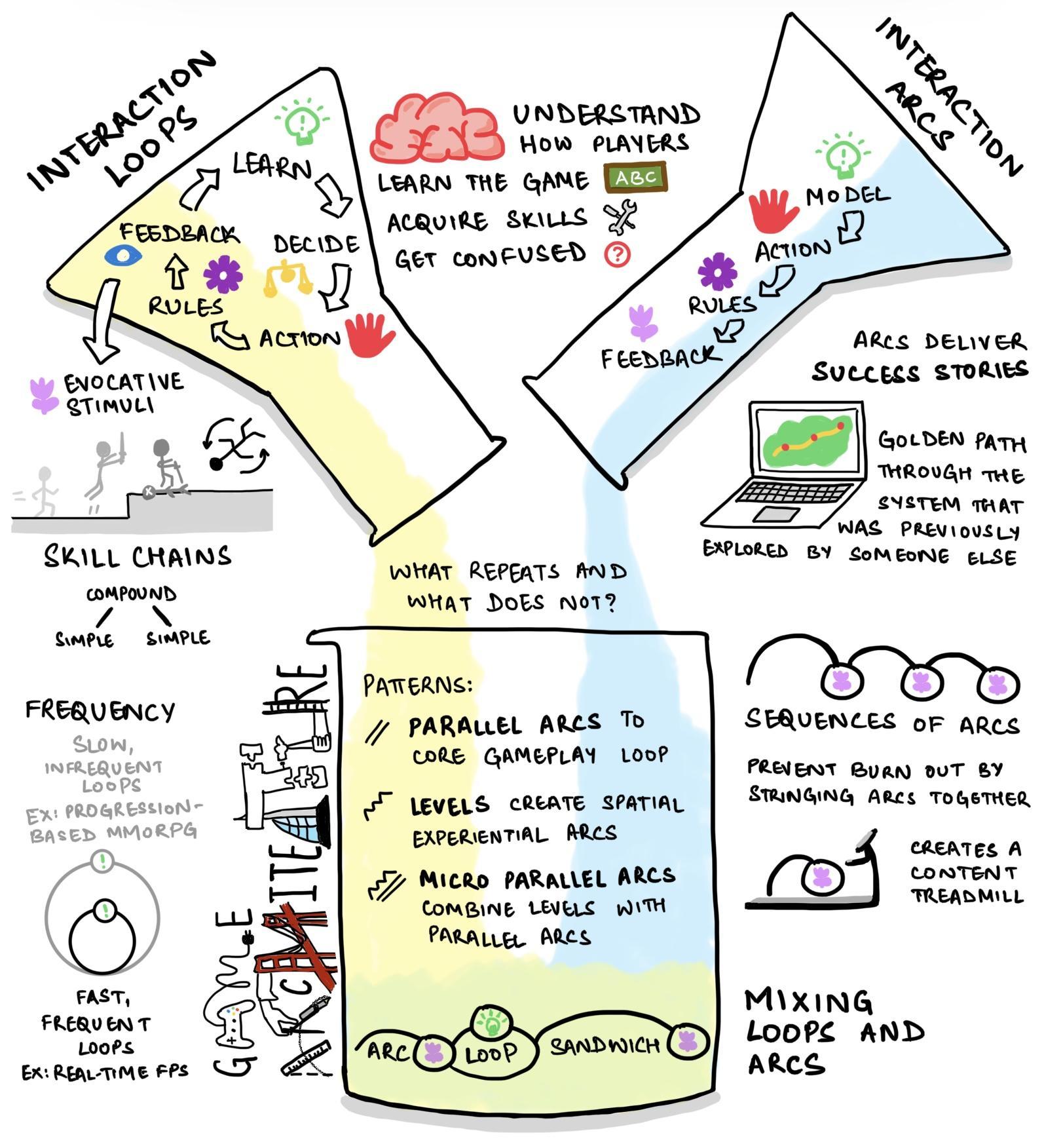
A game I enjoy is League of Legends, a multiplayer team-based battle arena by Riot Games where players use champions to eliminate enemy champions and break structures called “turrets.” Each champion has a set of unique abilities, which are complemented by items bought from the shop using gold earned during play. League enables interaction loops of skill chains that players can leverage for better in-game results, such as restricting an enemy’s movement or slowing them down, before using an attack ability. Some abilities or items may have a loop built into them; for instance, some abilities or items may increase the damage dealt by the third attack of the same kind. Most such skill loops tend to be fast and frequent, except the ultimate ability, which often has a longer cooldown time. The goal of the game is to destroy a structure deep in the enemy base, to get to which teams need to go through several turrets, while enemies defend them or attack your team’s turrets. This creates a sequence of interaction arcs, where a player fights an enemy, gets feedback through a banner and earned gold when they eliminate the enemy champion, potentially goes back to heal themselves or buy items from the shop, attacks a turret, gets feedback when it gets destroyed, and then goes on to attacking the next turret.


